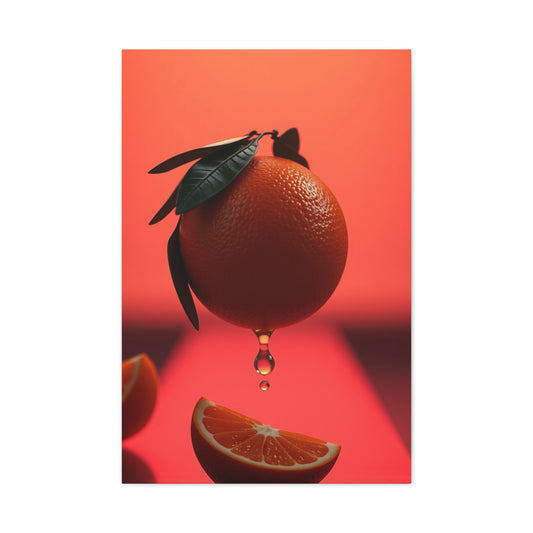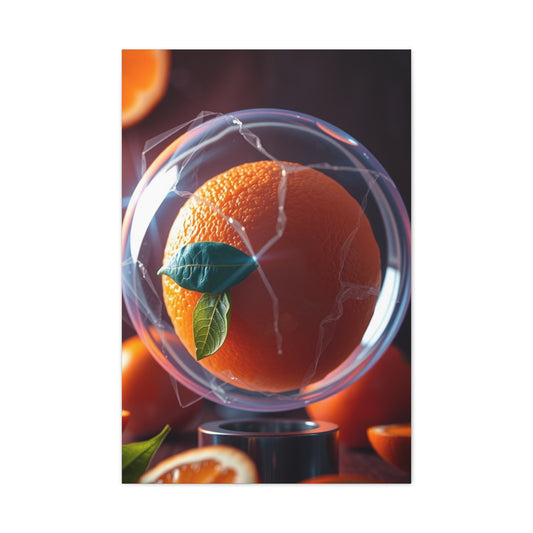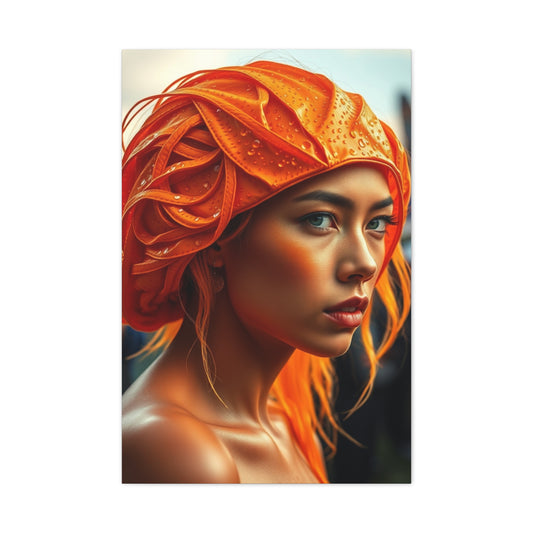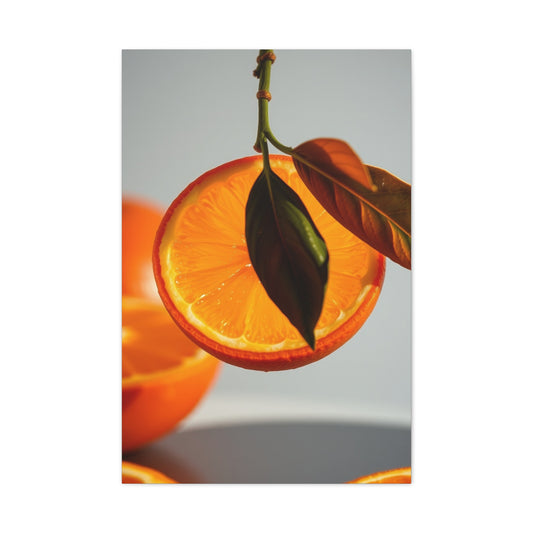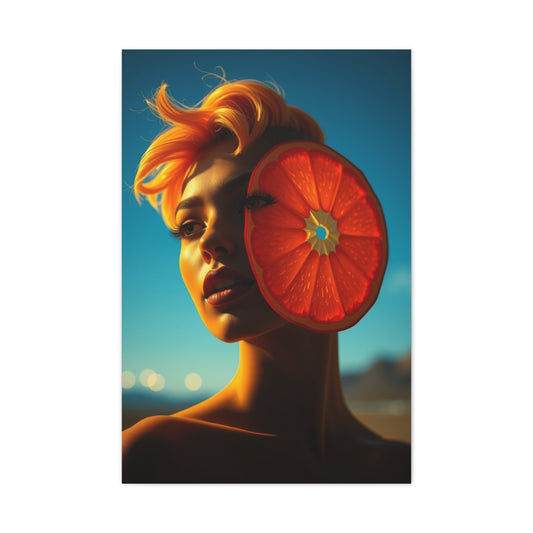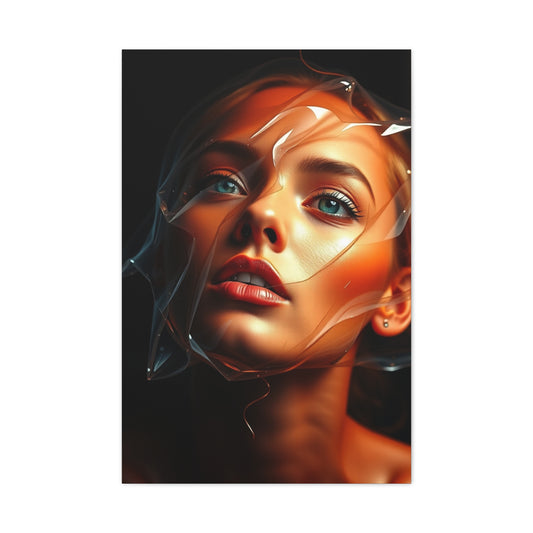In 2025, the design world continues to embrace expressive, bold aesthetics, and orange is emerging as a commanding choice for interior wall art. More than just a splash of color, orange brings a lively vibrancy, evoking joy, warmth, and creativity. Whether incorporated through subtle tones or audacious bursts, orange wall art has the potential to transform a neutral room into a vivid, engaging space.
The Inviting Energy of Orange in Home Styling
Orange has long been linked to feelings of enthusiasm, optimism, and warmth. In interior design, these qualities make it ideal for energizing a space without overwhelming it. Unlike more aggressive hues, orange strikes a compelling balance—it captures attention while still feeling approachable. Its tonal flexibility means it adapts well to both light and dark settings, making it an enduring favorite for modern homes.
This hue seamlessly harmonizes with neutrals like beige, gray, and cream, creating a fresh and lively contrast. It also blends effortlessly with complementary colors like turquoise, navy, or moss green. In 2025, orange will be seen as a key player in color palettes that embrace warmth, personalization, and artistic freedom. It works beautifully with boho-chic interiors, contemporary aesthetics, and even transitional design concepts that marry classic and modern sensibilities.
Trending Styles in Orange Wall Art
Expressive Abstract Compositions
Abstract orange wall art stands as one of the most emotionally resonant styles within modern interior design. These compositions challenge the viewer to engage with form and hue on an intuitive level rather than relying on literal interpretation. With their sweeping forms, fluid curves, and expansive color-block arrangements, abstract works lend themselves perfectly to contemporary and transitional interiors alike. The intrinsic spontaneity and fluidity of these artworks make them compelling additions to rooms that favor open concepts and visual dynamism.
From coral-infused gradients to bold tangerine streaks and smoky rust overlays, the diversity within abstract orange art offers endless possibilities. These pieces create emotional depth and serve as catalysts for conversation, contemplation, or even inspiration. An oversized abstract painting can become a room’s emotional anchor, drawing eyes and evoking visceral reactions. Meanwhile, smaller-scale abstract prints work effectively in tight spaces, creating micro-narratives that elevate hallways, nooks, or minimalist bedrooms.
The amorphous nature of abstract compositions pairs especially well with furnishings that emphasize clean lines or soft curves. When coupled with natural wood textures, matte metals, or muted upholstery, these works add both contrast and cohesion. Whether integrated into boho, industrial, or ultra-modern interiors, abstract orange wall art infuses energy without rigidity.
In 2025, abstract designs continue to evolve, incorporating mixed media such as acrylic pours, layered textiles, and even digital manipulations. These artworks offer multi-sensory richness and, when rendered in hues of orange, act as visual metaphors for creativity, transformation, and passion. A room that embraces expressive abstract orange art becomes more than just a space—it becomes a canvas for emotion.
Nature and Seasonal Motifs
The connection between the natural world and interior spaces remains deeply embedded in design trends, and orange plays a pivotal role in this harmonious relationship. Nature-themed orange wall art channels the earth’s most vivid seasonal transitions, from golden autumn forests to the fiery gradient of a summer sunset. These images bring the outside in, aligning with biophilic design principles that emphasize human connection to nature for enhanced well-being.
|
Related Catagories: |
Landscapes bursting with orange foliage, intricate depictions of dried leaves, and horizon lines drenched in twilight hues can add layers of warmth and nostalgia to any room. Especially effective in creating grounding energy, these works foster a sense of peaceful enclosure without making the space feel static. A panoramic depiction of a canyon bathed in the golden hour or a serene grove of burnt-orange trees can turn a mundane wall into an immersive experience.
These motifs work exceptionally well in dining rooms, meditation areas, and libraries—places where reflection, comfort, and mood-setting are key. When paired with organic textures like reclaimed wood, woven jute, or linen, the synergy between art and environment becomes palpable. Additionally, nature-themed orange art can serve as transitional pieces that bridge design elements between rooms, promoting flow and cohesion.
Artists in 2025 are increasingly exploring seasonal metaphors and elemental themes using eco-conscious materials. The rising popularity of prints on bamboo paper, water-based pigments, and natural fiber canvases aligns beautifully with this motif’s earth-inspired ethos. In essence, nature-centric orange wall art becomes a celebration not only of visual beauty but of ecological mindfulness.
Minimalist Elegance
For homeowners and designers who favor restraint, clarity, and thoughtful simplicity, minimalist orange wall art offers a refined yet bold visual statement. These pieces often rely on form reduction, negative space, and carefully calculated contrast to deliver maximum impact with minimal components. An unadorned orange line, a single bold circle, or a two-tone block composition can imbue a space with quiet strength.
Unlike more decorative or thematic art, minimalist orange works don’t distract—they distill. They’re ideal for serene settings like meditation rooms, modern offices, and Nordic-inspired living spaces. The subtle gradient of a tangerine stripe fading into ivory or the precise geometry of a burnt-orange triangle hovering over matte white evokes intellectual and emotional clarity.
Minimalist compositions often emphasize quality over quantity. Materials such as textured cotton paper, fine canvas, or brushed aluminum elevate the artwork’s tactile essence. In frameless presentations, these pieces feel integrated with the wall, creating a seamless extension of the architecture. This immersive quality allows minimalist orange art to transform the atmosphere of a room without dominating it.
Additionally, orange’s inherent warmth and energy soften the starkness sometimes associated with minimalist aesthetics. The result is an elegant harmony between stillness and vitality. This balance makes minimalist orange wall art particularly well-suited to compact spaces or transitional zones where you want design to speak softly yet confidently.
The 2025 trend in minimalist orange art leans toward experiential balance—leveraging color theory, spatial intelligence, and clean craftsmanship to create visuals that feel as intentional as they are inspiring. When executed well, minimalist orange wall art becomes a study in refined boldness, proving that simplicity and power are not mutually exclusive.
Together, expressive abstract compositions, nature-themed narratives, and minimalist designs capture the multifaceted spirit of orange wall art. These styles speak to a wide spectrum of personal tastes while maintaining relevance in evolving design landscapes. As we continue to reimagine home spaces in 2025, orange emerges not just as a color but as a conduit for emotional resonance, stylistic coherence, and creative vitality.
Geometric Precision
The revitalization of geometric design principles has sparked renewed enthusiasm for structured and symmetrical wall art, particularly in orange tones. In 2025, orange geometric wall art exemplifies the intersection of order and innovation. These designs harness the power of repetition, form, and mathematical elegance, allowing for a visual experience that is at once stimulating and meditative.
From interlocking cubes and concentric circles to tessellated hexagons and angular line art, geometric orange compositions provide a dynamic rhythm that infuses any space with purpose. The intentional use of vibrant orange within these forms adds vitality and flair to what might otherwise be austere. The result is a harmonious blend of spontaneity and rigor.
These designs work particularly well in settings where clarity, precision, and movement are desired—think of home offices, creative studios, or architectural living spaces. When displayed on clean, expansive walls or paired with industrial furniture, geometric orange art enhances spatial awareness and energizes the environment.
Moreover, in 2025, artists are experimenting with layered depth in geometric pieces, combining orange gradients with metallic foils or textural overlays. These enhancements add a sculptural quality, enabling viewers to engage with the artwork from multiple perspectives. Whether rendered in 2D on canvas or fabricated as laser-cut installations, geometric orange wall art transcends its decorative function to become an architectural feature.
Vintage Revival
The charm of the past is making a bold reappearance in modern interiors, and orange is at the heart of this retro renaissance. Vintage-inspired orange wall art recalls the visual language of bygone decades—particularly the mid-20th century—with a renewed twist. Bold typography, stylized silhouettes, and whimsical graphics now return, reinterpreted through a contemporary lens.
Iconic 1970s palettes—featuring burnt orange, mustard yellow, and chocolate brown—are being revived in poster art, retro film prints, and travel ads. These nostalgic pieces inject warmth and character into living spaces, particularly when juxtaposed with minimalist or modern furnishings. Their timeless appeal lies in their ability to tell stories while adding a pop of color that feels both familiar and fresh.
In bohemian and eclectic interiors, retro orange artwork offers a playful counterpoint to neutral backdrops and layered textures. Framed album covers, neon orange signage, and stylized botanical illustrations infuse rooms with personality and depth. Designers are also incorporating retro typography and iconography in ways that celebrate the history of visual communication.
What elevates vintage orange wall art in 2025 is the fusion of sustainability with style. Many contemporary artists source archival materials or use eco-conscious printing methods, giving these pieces a deeper cultural and environmental resonance. Through this revival, orange becomes more than a decorative hue—it becomes a link between generations and a celebration of artistic heritage.
Botanical Orange Florals
Nature continues to inspire contemporary interiors, and floral artwork remains a perennial favorite. In 2025, orange floral wall art is blooming in full force, capturing the spirit of vitality and renewal. These artworks go beyond conventional flower paintings; they embrace movement, mood, and emotion while staying grounded in botanical accuracy.
Poppies, dahlias, marigolds, and zinnias emerge as the stars of the orange floral spectrum. Their organic curves and saturated petals lend themselves to both hyperrealistic portrayals and expressive, painterly abstractions. In watercolor compositions, orange blossoms feel soft and luminous. In digital or high-definition photography, they burst forth with clarity and drama.
Botanical orange florals work beautifully in kitchens, breakfast nooks, and sunlit dining areas where a cheerful, fresh ambiance is desirable. They are equally at home in bedrooms and entryways, offering a sense of grace and natural rhythm. The soft edges of floral forms contrast well with sharp lines in modern furniture, creating visual balance.
Additionally, these pieces speak to a broader lifestyle trend: the desire to slow down and reconnect with nature. As part of this movement, floral art featuring native plants and seasonal arrangements has become especially popular. When accented with natural frames—like rattan, oak, or bamboo—the organic narrative deepens, inviting tranquility and subtle sophistication.
Personalized Artistic Touches
Personalization remains a powerful trend in 2025, and orange wall art offers an ideal medium for self-expression. Homeowners are increasingly commissioning bespoke pieces that reflect their unique stories, milestones, or values. Custom artwork elevates interiors beyond aesthetics, turning walls into meaningful canvases of identity.
Personalized orange art spans a wide range of formats—from hand-lettered quotes in vivid tangerine hues to abstract visual representations of meaningful experiences. A custom illustration of a childhood home bathed in a warm orange sunset, or a calligraphic rendering of a favorite poem, can transform any room into a deeply personal sanctuary.
In gallery walls, these tailored works integrate beautifully with family photos and collected memorabilia, creating cohesive narratives that speak to legacy and intention. Even in professional environments like studios or home offices, a custom orange piece can serve as both a visual anchor and a motivational focal point.
Technology also plays a role in expanding personalization options. Digital artists now offer virtual consultations and augmented previews, allowing homeowners to visualize how a piece will look within their space before commissioning it. Many use sustainable materials and handcrafted finishes to ensure every piece not only resonates emotionally but aligns with environmentally conscious values.
Commissioning custom orange wall art bridges creativity and authenticity. It invites deeper engagement with the art itself and creates a sense of co-authorship between the artist and the homeowner. These works often become heirlooms—stories captured in pigment and preserved in time.
Together, geometric, vintage, botanical, and personalized themes showcase the extraordinary breadth of expression available through orange wall art in 2025. These trends highlight how a single color can transcend style boundaries to reflect personality, era, and emotion. As we continue to redefine our living spaces, orange remains a magnetic force that channels optimism, individuality, and creative vitality.
Enhancing Decor with Orange Art
Incorporating orange artwork into home interiors is both a bold and rewarding design choice. The key lies in approaching it with an awareness of visual equilibrium, intentional color integration, and environmental context. Orange, known for its vibrancy and dynamism, can energize and rejuvenate a room when introduced with care and sophistication. The objective is to amplify its natural warmth without allowing it to dominate or disrupt the harmony of the overall design scheme.
When selecting orange wall art, one must consider the surrounding environment, beginning with the color palette. Neutrals—such as white, beige, taupe, and muted grays—serve as ideal backdrops. These tones provide visual serenity, enabling the orange hues to take center stage without overwhelming the eye. An orange canvas set against a matte white wall immediately commands attention while preserving the refined elegance of the space.
Incorporating earthy tones deepens the composition’s connection to natural elements. Terracotta, sienna, and burnt ochre complement orange by echoing its origin in the natural spectrum. These shades blend seamlessly into design aesthetics rooted in organic materials like wood, linen, and stone. Whether through complementary textiles, vases, or accent pillows, these colors reinforce a grounded ambiance, creating an inviting, cohesive interior.
For contrast and vibrancy, incorporate complementary tones like dusty blue, navy, or cerulean. These cooler hues temper orange’s inherent heat and introduce a refreshing balance. Even subtle accents—such as a ceramic pot, a patterned throw, or a soft rug—can deliver this cooling effect while reinforcing the room’s overall aesthetic intent.
Texture plays a vital role in shaping the tactile and visual depth of any room. Orange works especially well with tactile materials that echo its richness. Consider pairing orange art with furnishings made of boucle, velvet, or raw silk. These textures absorb and reflect light differently, giving the space a dynamic, layered quality. A boucle chair in a warm neutral, paired with orange-toned wall art, creates a sensory symphony that feels intentional and curated.
Accessories such as woven baskets, clay vases, and rattan frames contribute to a layered aesthetic that accentuates the warmth of orange. These natural textures introduce dimension and authenticity, helping the orange elements feel organically integrated rather than artificially imposed. A balance between smooth and rough finishes adds to the room’s personality and engages the senses.
Illumination is equally crucial. Proper lighting ensures that the orange artwork retains its visual impact throughout the day. Ambient lighting provides the base layer, but it’s the task and accent lighting that will elevate the presence of wall art. Adjustable ceiling-mounted spotlights, directional sconces, and warm-toned LED strips can be positioned to cast gentle shadows and highlights on the artwork. This interplay of light brings out the nuances in the orange tones, enhancing their vibrancy and making the art feel alive.
Ultimately, the key to integrating orange wall art is restraint paired with confidence. Rather than saturating the room with orange, use it as a focal point supported by a carefully crafted ecosystem of tones, textures, and lighting that honors its bold nature.
|
Related Catagories: |
Strategic Placement Throughout the Home
Orange wall art is highly versatile when thoughtfully placed in alignment with a room’s function and layout. Each space in the home offers a unique opportunity to explore how this energetic color can influence mood, functionality, and aesthetic impact.
Living Spaces
In living rooms, orange artwork serves as a powerful anchor. Large abstract or expressionist pieces placed above a sofa or fireplace create a central focal point, offering both color and character. Pair these with layered textiles in subdued hues to let the artwork radiate energy without visual clutter. Accent tables in walnut or black iron, along with indoor plants in terracotta pots, complement the vibrancy of the orange while keeping the composition grounded.
Bedrooms
In the sanctuary of a bedroom, orange art takes on a more tranquil role. Select pieces in lighter tones—such as coral, apricot, or rose-orange—to instill warmth without disrupting the room’s restful atmosphere. Hung above the bed, a soft-toned piece depicting a sunset, floral abstraction, or minimalist form can promote emotional calm. Match this with pale wood furniture, woven throws, and neutral linens for a restorative and serene ambiance.
Bathrooms
Bathrooms, often perceived as sterile or utilitarian, benefit immensely from the presence of orange art. Smaller framed prints, mosaics, or ceramic accents in orange can transform these spaces into intimate, energizing retreats. Hang a print featuring orange botanical forms above a towel rack or near a mirror to introduce color without encroaching on functionality. Matte black fixtures, white tiles, and copper accessories will heighten the impact by offering a modern yet earthy contrast.
Dining Areas
The dining room is a natural canvas for vibrant design. Orange tones stimulate conversation and appetite, making them ideal for areas centered around gathering and nourishment. A series of framed art prints in burnt orange or terracotta, positioned symmetrically above a buffet or across from a dining table, creates visual engagement. Abstract pieces in these hues also introduce a sense of movement and rhythm. Enhance this setup with lighting fixtures that cast a golden glow—such as pendant lights with amber bulbs—to elevate the artwork and overall mood.
Entryways
First impressions matter, and entryways are the perfect location to make a color-forward statement. A single large canvas or a curated cluster of small orange-themed pieces can immediately convey warmth and style. Position the art above a streamlined console table, and accessorize with sculptural decor or seasonal florals in muted tones. This combination becomes an artistic vignette that welcomes guests with personality and intentionality. The key is to create a space that is memorable yet balanced—one that reflects your aesthetic identity from the moment the door opens.
In each room, orange wall art serves as both decoration and narrative. It evokes emotion, energizes the space, and invites deeper engagement. When placed with intention and supported by complementary elements, it transforms rooms from ordinary to expressive, bringing artistry and vitality into the everyday environment.
Choosing the Right Shade and Material
Selecting the ideal shade of orange for your wall art involves more than aesthetic preference—it requires a holistic understanding of spatial psychology, light behavior, and functional purpose. The tonal spectrum of orange is vast, ranging from fiery tangerine to subdued terracotta, and each variation possesses its own emotional signature.
Burnt orange, for instance, imparts a sense of grounded wisdom and maturity. It evokes autumnal warmth and nostalgia, making it an excellent choice for libraries, studies, or rooms designed for introspection and depth. When integrated with moody lighting and dark wood accents, burnt orange art adds sophistication and narrative gravitas.
On the other hand, peach, apricot, and other pastel variants of orange radiate charm and delicacy. These hues uplift and refresh, making them ideal for bedrooms, nurseries, and other restorative spaces. Their softness pairs effortlessly with light-toned walls and minimalistic decor, offering a serene canvas for comfort and visual balance.
When selecting your shade, consider the room’s lighting—both natural and artificial. North-facing rooms tend to be cooler and benefit from warmer, richer oranges to counteract the chill. Sun-drenched spaces may fare better with more muted or matte oranges to prevent glare and oversaturation. Understanding how orange interacts with your space’s light sources helps you achieve optimal vibrancy without overwhelming the room.
Equally vital to the art’s effectiveness is the material on which it is rendered. The medium determines not only the texture but also how light interacts with the pigment, thereby altering the viewer’s perception of the hue and form.
Canvas remains the most popular substrate for orange wall art due to its rich tactile surface. A matte finish on canvas can subdue orange’s intensity, resulting in a refined and velvety aesthetic. Gloss-coated canvases, by contrast, amplify the vibrancy, making them more suitable for spaces that benefit from bold, dynamic statements. Gallery-wrapped canvases offer a frameless presentation that feels modern and immersive.
Metal is a strong contender in contemporary interiors, particularly those with industrial or minimalist tendencies. Aluminum or steel panels with infused orange tones deliver a clean, architectural feel. The reflective quality of metal alters with shifting light throughout the day, giving the artwork an evolving appearance. This kinetic visual energy is especially desirable in open-concept spaces or areas with directional lighting.
Wood as a medium introduces a natural, rustic elegance to orange tones. The grain of reclaimed or distressed wood adds visual interest and depth, complementing the warm spectrum of orange without diminishing its vibrancy. Pieces carved or painted on wood fit seamlessly into farmhouse, bohemian, or globally inspired interiors. They radiate authenticity and a tactile connection to the organic world.
Glass and acrylic offer sleek sophistication for more urban, modern environments. Orange wall art encased in glossy acrylic panels appears polished and ethereal. The light refracts differently through these surfaces, making the orange glow from within. This is particularly effective in small spaces where reflective materials help distribute light and expand visual boundaries.
Fabric-based materials—such as woven tapestries or textile collages—bring in warmth and textural richness. These mediums blend visual storytelling with craftsmanship, and orange in this form evokes heritage, cultural identity, and artisan skill. They’re excellent for eclectic and artistic interiors that celebrate individuality and global influences.
Texture and Form as Amplifiers
Beyond color and material, the dimensionality of an artwork determines how deeply it resonates within a space. Texture and form invite physical and emotional engagement, turning static images into living, breathing experiences. When it comes to orange wall art, these qualities become even more crucial because the hue itself is naturally assertive.
Raised brushwork on an oil painting adds layers that cast delicate shadows, giving orange tones a sense of depth and movement. These textural nuances draw the viewer in, encouraging a closer inspection. In this way, the art becomes interactive, sparking curiosity and emotional reflection.
Three-dimensional pieces, such as sculptural wall art or installations, elevate orange from pigment to presence. Whether through molded clay, layered resin, or carved wood, 3D orange artworks create spatial drama. They engage light and shadow in a dynamic dance that changes depending on the viewer’s position and time of day.
Mixed media offers endless possibilities for form and function. Imagine an orange art piece composed of jute, handmade paper, dried botanicals, foil, or ceramic shards. These hybrid artworks defy categorization, blurring the line between fine art and object. Their complexity invites exploration, and the varied surfaces catch light in unexpected ways, amplifying the orange hues through subtle gradation and texture.
Installation pieces—where orange becomes part of the wall or architecture itself—are gaining popularity in avant-garde and bespoke interiors. These pieces might involve murals with built-in lighting, or modular forms that can be rearranged. The interactivity of such works adds playfulness and ingenuity to the space.
Tactile elements are not limited to the artwork itself but can be extended through complementary decor. A room with orange wall art benefits from strategic layering of textiles—such as boucle ottomans, handwoven rugs, and tactile draperies—that echo the richness of the piece. These supporting textures enhance the room’s sensory experience without competing with the art.
When orange art is paired with sculptural lighting—such as pendant lamps with ribbed glass or metallic sconces—the textures come alive. The shadows and highlights these light fixtures cast upon the artwork deepen its dimensionality, offering viewers a multisensory visual journey.
Incorporating orange into your interiors via textured and form-forward wall art is not simply a design decision—it is an artistic narrative. It allows your space to communicate emotion, celebrate craftsmanship, and inspire connection. Whether you gravitate toward the grounded elegance of wood, the sheen of acrylic, or the complexity of mixed media, the right blend of texture and form ensures that your orange art is not just seen—it is felt.
With the right shade, material, and texture, orange wall art transcends decor. It becomes a sculptural expression of ambiance, an emotive centerpiece that infuses vitality, warmth, and creative edge into the very fabric of the home.
Frameless Pieces for Modern Impact
The frameless trend in wall art has gained significant momentum in contemporary interior design, offering a fresh, modern approach to visual storytelling. When it comes to bold hues like orange, the absence of a frame enhances the fluidity of the artwork, allowing it to integrate seamlessly with its environment. Without the visual interruption of borders, orange wall art appears more sculptural and immersive, inviting the viewer to engage with it in a more intimate, interpretive way.
Frameless orange pieces evoke an effortless aesthetic—one that suggests freedom, creativity, and architectural balance. They are especially effective in minimalist interiors, where every object is curated for purpose and impact. In gallery-style spaces, these artworks often become the focal point, drawing the eye without overpowering the room. Their unframed quality gives them the illusion of floating, creating a sense of depth and spatial intrigue.
To enhance this effect, consider floating mounts that elevate the piece slightly off the wall. These subtle suspensions produce a gentle shadow, adding dimensional contrast that shifts with natural and artificial light. The dynamic interaction between artwork and its surroundings intensifies the emotional resonance of orange, giving it a radiant vitality that evolves throughout the day.
Frameless art is particularly well-suited for abstract compositions, where the edge of the canvas isn't meant to define the limits of the expression. Geometric patterns, gradient fields, or gestural brushwork in orange benefit from this borderless format, as it amplifies the sense of motion and expansiveness. The result is a living artwork that extends beyond its dimensions, merging into the rhythm of the space itself.
This approach also supports a cleaner and more cohesive aesthetic. Frameless pieces eliminate the need to coordinate frame styles with other decor elements, simplifying the visual narrative and allowing color and form to speak unencumbered. It is a testament to design minimalism, where the message of the artwork is not diluted by extraneous materials.
A Color With Cultural Resonance
The emotional and symbolic significance of orange transcends aesthetics, deeply rooted in diverse cultural histories and spiritual traditions. Across the globe, this vivid hue has long represented vitality, optimism, and transformation, offering a profound layer of meaning to interior environments.
In Eastern philosophies, particularly within Buddhism and Hinduism, orange is revered as a sacred color. It symbolizes enlightenment, spiritual rebirth, and the quest for inner knowledge. Monks in these traditions wear orange robes as a sign of renunciation and devotion. When used in wall art, this spiritual connotation lends orange a sense of gravity and purpose, turning decor into a meditative experience.
In Western contexts, orange carries a different kind of symbolism—one that leans into innovation, energy, and boldness. From the retro advertising of the mid-20th century to modern branding, orange has signified change, movement, and accessibility. It’s a color of pioneers, artists, and freethinkers—those who challenge norms and seek new perspectives. Displaying orange artwork in your home can subtly communicate these values, reinforcing a narrative of creativity and forward-thinking design.
The color’s connection to nature further amplifies its impact. Sunsets, autumn leaves, and citrus fruits all possess the visceral, life-affirming energy that orange wall art can replicate. These associations with natural beauty and seasonal transition infuse spaces with warmth and rhythm, echoing the cyclical flow of life itself.
By incorporating orange through carefully selected artwork, you’re not only decorating a space but also engaging in cultural storytelling. Each hue—from fiery vermilion to mellow peach—carries a message, inviting the observer to interpret and connect. Artworks rendered in orange serve as both a visual anchor and a philosophical bridge, inviting contemplation and emotional resonance.
Enduring Appeal and Practicality
While orange captivates through its visual boldness and cultural depth, it also boasts significant practical advantages. As a design choice, orange offers remarkable durability, both in terms of aesthetics and functionality. This makes it an ideal investment for those seeking timeless style with everyday usability.
Unlike more delicate or trend-sensitive colors, orange maintains its vibrancy over time, resisting the visual fatigue that often accompanies oversaturation. Its rich pigment retains luminosity even in rooms exposed to fluctuating light conditions. This resilience ensures that orange wall art remains impactful, vibrant, and emotionally engaging year-round.
Moreover, orange is inherently forgiving. It camouflages imperfections on walls—such as minor scuffs or inconsistencies in texture—allowing for a polished appearance without constant upkeep. In high-traffic areas like hallways, family rooms, or home offices, this characteristic makes orange artwork both a beautiful and pragmatic choice.
The color’s adaptability is another key factor in its enduring appeal. Orange transitions effortlessly across seasonal palettes. In colder months, it pairs beautifully with rich browns, deep greens, and charcoal grays. Come spring and summer, it harmonizes with pastels, whites, and even vibrant blues, making it a year-round asset. This chromatic versatility means homeowners don’t need to overhaul their decor with every seasonal change—orange remains a cohesive element regardless of evolving trends.
Additionally, orange acts as a stylistic bridge between traditional and modern aesthetics. In classic settings, it brings warmth and freshness without undermining formality. In contemporary spaces, it adds a lively counterbalance to minimalistic or monochromatic schemes. Few colors can navigate this dual role so gracefully.
From a practical standpoint, orange wall art is also readily available in a variety of materials and finishes that suit different maintenance preferences. Whether you opt for a stain-resistant canvas, a wipeable metal panel, or a protected acrylic print, your artwork will continue to radiate charm and color integrity over time.
Ultimately, orange wall art stands at the intersection of beauty and utility. Its emotional richness, cultural significance, and tactile resilience make it more than just a decorative feature—it becomes an essential design element that shapes the mood, character, and longevity of your interior environment. With thoughtful placement and complementary design elements, orange art transforms your walls into enduring expressions of style and soul.
Final Thoughts: Energizing Spaces with Orange
Whether through vivid abstract designs, refined floral patterns, or customized prints, orange wall art offers an expressive and contemporary way to personalize your home. In 2025, orange is not just a trend—it’s a vibrant, empowering element that brings joy, creativity, and connection into every room.
Let your walls speak with warmth and charisma through the energetic embrace of orange. By selecting the right shade, pairing it thoughtfully with your interiors, and choosing the most suitable materials and formats, you can transform any space into a haven of style and emotional resonance. Orange art is your invitation to celebrate color, express personality, and reimagine your environment with brilliance and boldness.














